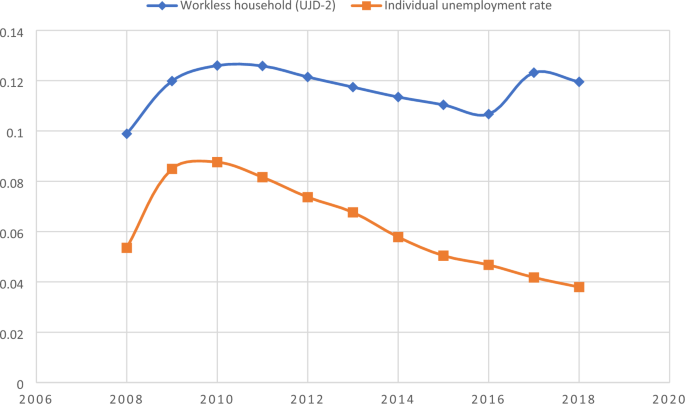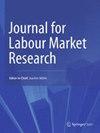就业市场两极分化和美国贫困
IF 1.6
Q2 INDUSTRIAL RELATIONS & LABOR
引用次数: 0
摘要
摘要本文认为,美国高增长和失业率下降中贫困率停滞的困惑可以用以就业质量和就业分配为特征的两极分化就业市场来解释。近几十年来,在发达国家,特别是在美国,低质量的工作岗位越来越多,工作岗位分配不均。我计算出了就业分配不均衡指数,该指数反映了家庭间的就业分配情况。就业分配不均衡指数越高,说明有多人就业的家庭和没有就业的家庭数量较多。同样,低质量的工作是那些不提供全职工作的工作。双向固定效应模型估计,家庭间工作分配的不平衡加剧了州一级的总体贫困。同样,高质量的工作可以帮助家庭摆脱贫困,而低质量的工作则不能。这篇论文表明,消除贫困需要政府指导劳动力市场政策,使其更适合于将工作从个人分配到家庭,并将坏工作转变为好工作,而不仅仅是在经济中创造更多的工作。本文的贡献在于阐述就业与贫困的关系,解决就业质量和分配问题,并提供经验证据。本文章由计算机程序翻译,如有差异,请以英文原文为准。

Job market polarization and American poverty
Abstract The article posits that the puzzles of stagnating poverty rates amidst high growth and declining unemployment in the United States can be substantially explained by polarized job markets characterized by job quality and job distribution. In recent decades, there has been an increased number of poor-quality jobs and an unequal distribution of jobs in the developed world, particularly in the United States. I have calculated measures of uneven job distribution indices that account for the distribution of jobs across households. A higher value of the uneven job distribution indices implies that there are relatively large numbers of households with multiple employed people and households with no employed people. Similarly, poor-quality jobs are those jobs that do not offer full-time work. Two-way fixed-effect models estimate that higher uneven job distribution across households worsens aggregated poverty at the state level. Similarly, good-quality jobs help households escape poverty, whereas poor-quality jobs do not. This paper suggests that eradicating poverty requires the government to direct labor market policies to be tailored more toward distributing jobs from individuals to households and altering bad jobs into good jobs, rather than merely creating more jobs in the economy. This paper contributes by elaborating on relations of employment and poverty, addressing employment quality and distribution, and providing empirical evidence.
求助全文
通过发布文献求助,成功后即可免费获取论文全文。
去求助
来源期刊

Journal for Labour Market Research
INDUSTRIAL RELATIONS & LABOR-
CiteScore
2.60
自引率
5.90%
发文量
17
审稿时长
15 weeks
期刊介绍:
The Journal for Labour Market Research is a journal in the interdisciplinary field of labour market research. As of 2016 the Journal publishes Open Access. The journal follows international research standards and strives for international visibility. With its empirical and multidisciplinary orientation, the journal publishes papers in English language concerning the labour market, employment, education / training and careers. Papers dealing with country-specific labour market aspects are suitable if they adopt an innovative approach and address a topic of interest to a wider international audience. The journal is distinct from most others in the field, as it provides a platform for contributions from a broad range of academic disciplines. The editors encourage replication studies, as well as studies based on international comparisons. Accordingly, authors are expected to make their empirical data available to readers who might wish to replicate a published work on request. Submitted papers, who have passed a prescreening process by the editors, are generally reviewed by two peer reviewers, who remain anonymous for the author. In addition to the regular issues, special issues covering selected topics are published at least once a year. As of April 2015 the Journal for Labour Market Research has a "No Revisions" option for submissions (see ‘Instructions for Authors’).
 求助内容:
求助内容: 应助结果提醒方式:
应助结果提醒方式:


